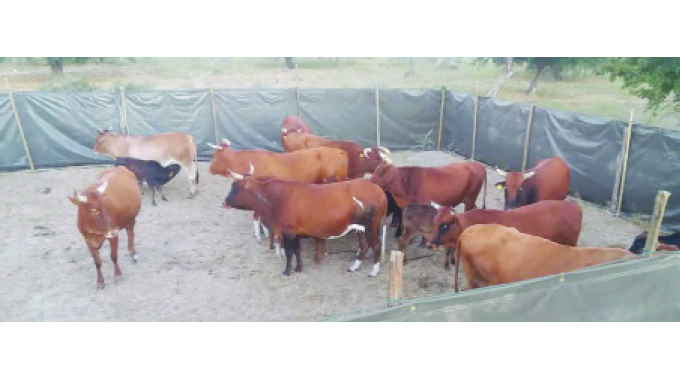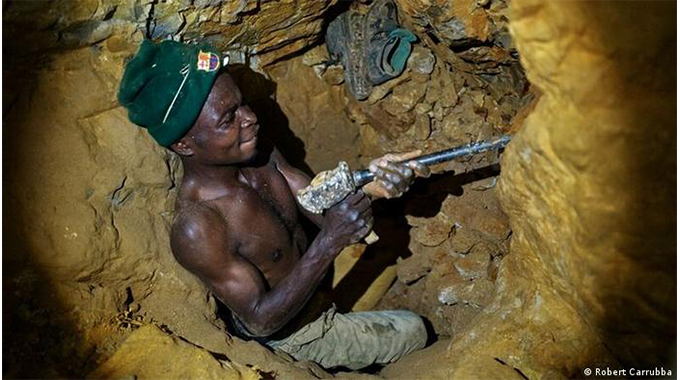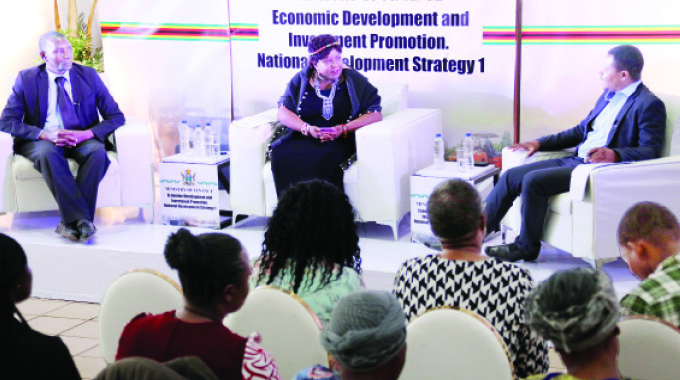Boma: Unique method to protect livestock from lions

Leonard Ncube, Victoria Falls Reporter
TALK of hitting two birds with one stone — this is what villagers in human-wildlife conflict prone communities in Hwange are doing to protect their livestock from animal attacks and at the same time fertilising their fields using a simple mobile predator-proof pen called boma.
Communities adjacent to game parks especially in Binga, Hwange, Lupane and Tsholotsho endure conflict with wildlife which destroys crops and property; injures and sometimes kills people.
Over and above several other measures like beating tins, making noise through clapping hands and screaming and making fire, communities are now using mobile boma pens to protect their livestock overnight.
The concept is slowly becoming popular in communities in Hwange district especially in Kachechete in Hwange West and Mabale in Hwange East where villagers have adopted it as a simple way of dealing with human-wildlife conflict.
Lions and hyenas sometimes launch attacks on villagers’ pens and kill cattle, goats, sheep and donkeys at night.
The livestock is housed in bomas overnight to protect them from lions.
The Wildlife Conservation Research Unit (WildCRU), which conducts lion research under Oxford University in Hwange, started the boma concept in Mabale in partnership with the Hwange Rural District Council.
The boma concept is a simple mechanism where a white un-transparent canvas sail is used to make a pen. It is a simple unsophisticated method whereby poles are erected for the perimeter of the pen and the canvas is put right round.
The canvas is about two metres high and is pitched in such a way that an animal cannot see inside.
Liomba Junior Mathe, the lions’ guardian manager for WildCRU TKPP Zimbabwe said the concept exploits a technique used in the live capture of game animals.
“Our recent innovation replaces traditional bomas with boma ‘walls’ made from opaque white plastic sheeting (PVC) which is supported by poles and strung on ropes or cables like a curtain — the fact that many wild species are intimidated by the ruse of a flimsy opaque barrier — and being naive to it, therefore will not challenge it,” he said.
Mathe said so far no lion has breached these bomas around communities in the Hwange National Park.
An added bonus is both the reduced environmental cost of cutting the indigenous timber for traditional bomas and another innovation — the siting of these bomas on fallow crop fields where livestock collected together from a number of households can deposit soil-nourishing manure and trample it into the soil, he said.
“Moving these bomas around to different peoples’ crop fields gives each a turn to be naturally fertilised. The mobile boma is made of four equally sized white sheets of 25m length x 1,7m height aligned together with eyelets along tapered ends of the sheet allowing it to be hooked onto a rope (like a curtain) supported by a few wooden poles for maximum strength and stability,” he said.
WildCRU works with the Africa Centre for Holistic Management to develop the bomas.
A mobile boma has a carrying capacity of 250 cattle in a 625m² enclosure. They are placed in crop fields and moved after seven to 28 days to reduce trampling at one given site.
Igugu Trust, an organisation formed in 2017 to provide training to rural communities on how to improve their livelihoods through planned grazing and to encourage care and well-being for communities and all living systems, partnered with HRDC to mitigate the impact of human-wildlife conflict in Kachechete ward where bomas have also been developed.
The concept has also helped foster unity among villagers as it is not done at household level but each village has a single boma that rotates among villagers. The pen is made right inside a field and after some days it is uprooted and put in another field and another homestead.
Where the boma is put, the dung provides manure for the fields.
Each villager has an opportunity to have the boma in his or her field, especially those closer to homesteads. This has helped fertilise fields and improve yields for farmers whose fields had become infertile.
It is widely used during the dry season after harvest until around December when the rains start.
A wildlife conservation organisation, Victoria Falls Wildlife Trust has also joined in to help tag and brand animals on behalf of villagers so that when they mix, they are still able to identify them. It has created a database for each beast. It assists the communal farmers to understand better farming practices and to have easy market access.
The trust also helps with clinical examinations and vaccination of livestock housed in the predator-proof mobile bomas to prevent diseases.
Saturday Chronicle recently visited BH25 in Ndlovu, Kachechete where villagers said the mobile bomas have helped reduce cases of attack on cattle at night.
“We gather all cattle in one boma at night and this will be in one field for two to three weeks before it is moved to another field. The bomas are put especially on those fields that have become infertile so that the manure restores nutrients,” said BH25B village head, Gladys Maphosa.
HRDC Environment and Natural Resources Officer Nxolelani Ncube said the bomas will go a long way in helping to protect livestock from predators, especially lions and hyenas.
“These predators will never jump or attack animals that they do not see. It’s a physical and visual barrier to predators and protects all forms of livestock,” he said. — @ncubeleon











Comments